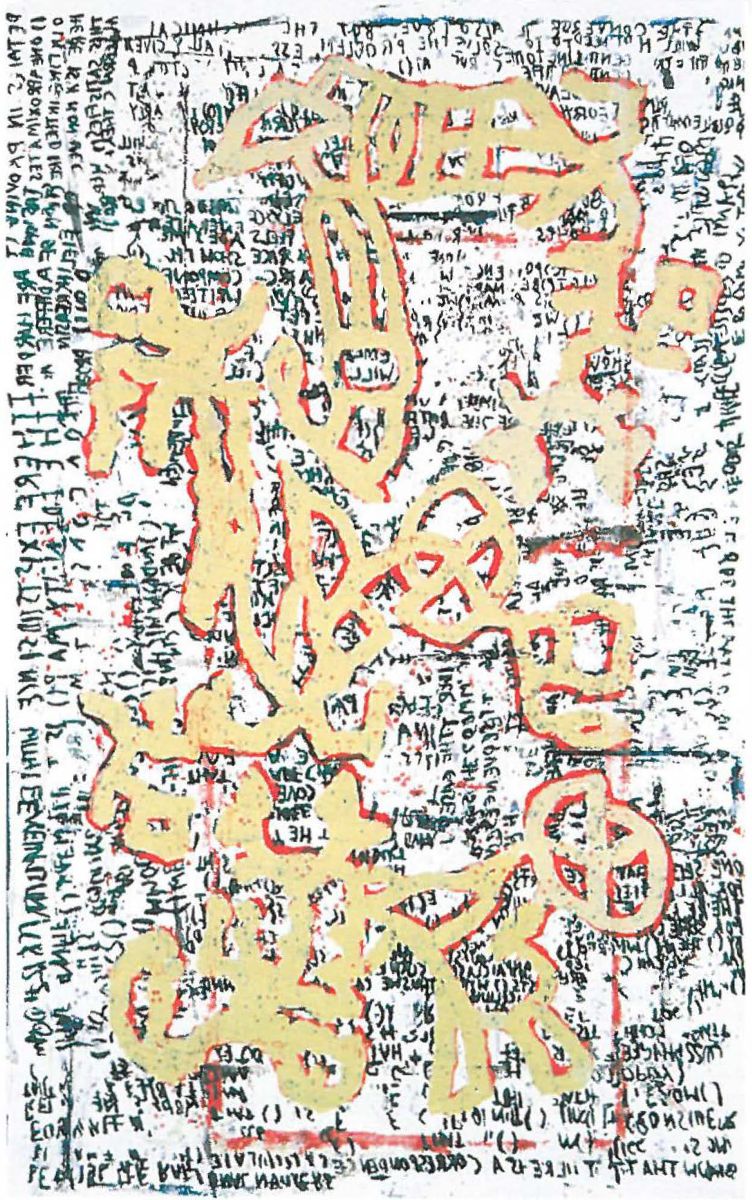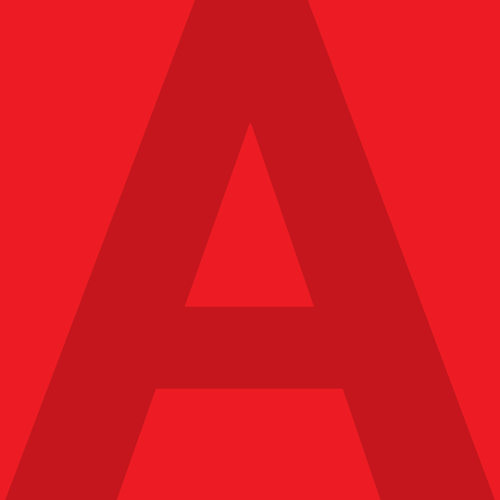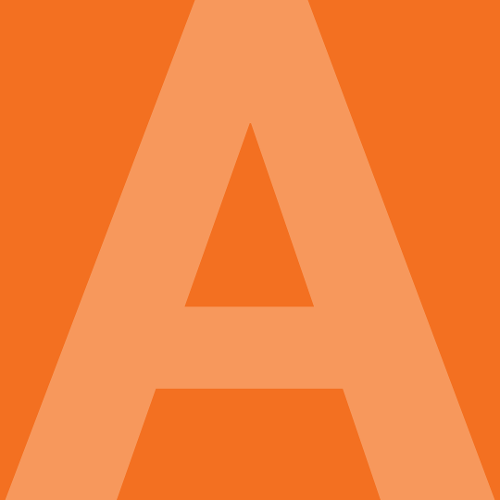.jpg)
A recent showing of works by Adelaide painter Paul Hoban left me ruminating over the relevance of certain words to characterise his project. Goaded by the exhibition checklist while viewing the works I jotted down a summary list of cryptic phrases that sprang to mind: a babble of accretions; devices for divination; demonstrated effects of methodology; haptic gestures; dadaistic fatalism; unauthorised hieroglyphics.
Further viewing led upstairs to the mezzanine level where a second component of the exhibition was on display. A series of Painting Devices (1995-2001) and paper template works provoked a different set of descriptors: gaffer-taped bindings; redundant fulcrums; Molotov cocktails; makeshift electrical repairs, clamped, fused, hinged, measured. Night had descended on NADA (Night + Day), 2000, a grid of painted over pages, starless and bible black. In complete contrast X, 2001 with its interlocking nets or worm-like casts in grey and black, pasted over with simulations of text on paper, gave a hint of shallow illusionist space, a rare feature in the body of the show.
As I capped my biro and was concluding that there was something particularly Art Brut-ish about it all, a semblance of a Yankee seventies geist pervaded the quiet. In these apprehensions I was not aided by the cryptic titles of the works, which seemed to do nothing to explicate the peculiar brio of the work. Momentarily, a figment of a raft bearing minimal expressionists drifts by... but Hoban's project, as essayist Barbour perspicaciously claims, seems less precious and certainly braver than many a dabblement seen here in Adelaide over the past few years.
In Barbour's text I wasn't surprised to read much later a tract that opened in a conversational first person narrative, only to quickly mutate into a series of clauses, disconnected yet proximate short-burst phrases and sentences, before settling on a "brief and partial index of the sorts of devices, strategies, methods, figures, cross-references and allusions found in [the] work" - as if the infection of painterly method had spread to the author's desktop.
It would appear that the many who have reviewed or provided commentary on Hobans' work have grappled with the rebus-like productions from his brush largely in formal terms without elaborating a contextual terrain, or some cultural coordinates to perhaps enable us to work out just what the hell is going on here. Maybe the works themselves wilfully provide their own foil to this endeavour by providing us with worn-out signage, or worse, ground directions which, after closer scrutiny turn out to be at odds with a dog-eared map.

Apart from illustrating seven of the ten paintings in the show the catalogue also overviews sixteen other works produced between 1992 and 2000 – a timely decision given Hoban's reproductive absence from the recent Chemistry exhibition catalogue (Art Gallery of South Australia, 2000). This thumbnail survey documentation for the current show becomes quite instructive. One sees at a glance over a dedicated decade that the artist, critical and conscious in his eschewal of any hint of realism or representation appears to be moving away from the clunky, bifurcated and internally taut fields of painterly bricolage and towards a more molecular, organic and, dare I say, relaxed mode of working.
Much of the larger, earlier work reads as if two facing and unrelated pages of a book have been revealed for perusal. The elements at work in the recent paintings, in contrast, seem to coalesce into a singular field in spite of the lurid grounds, which are of secondary importance, compared to what is happening on the utmost surface of the works. And what is happening there? As Barbour would have it, things are "tuberous, pulsing, rhizomatic, symptomatic [and] feeding like yeast." His psychotic point of reference rings true for the work in question too, given its obsession for detailed systems that appear to have their own internal and coherent logic.
Hoban's work appears to be a weird brew of concerns and stratagems, biological in appearance, as painterly gestures cluster around each other and divide in a congealed frenzy of mitosis, or haploid proliferation. Like the world of micro-organisms the impression remained that many of the works could be viewed in any orientation without sacrificing the visual remnants of methodology. I was left mulling over the point, "Just when is the right time to cap it off?"












